The Horse, The Bison and The Comanches

The warrior spirit of the Comanches is the story of the fierce and feared warriors known as
“Lords of the Plains” who for over a century dominated the Comancheria, a region of about
250,000 miles covering present-day Texas, Colorado, New Mexico, western Oklahoma and
Kansas. Our bison ranch in Sayre, Oklahoma, is located in their former heartland, and today
the Comanche Nation occupies the Lawton, Fort Sill and surrounding counties.
In the 18th and mid-19th centuries, the Comanches ruled the Southern Plains and guarded it
from other native tribes, but especially pushed back the Spanish in their attempts to conquer
North America.

Map showing the approximate area of the Comancheria, occupied
by the various Comanche tribes before 1850.
(Wikimedia Commons)
These “lords,” who called themselves Numunuh, meaning “The People,” were originally part
of the Shoshone tribe of eastern Wyoming, but they split off in the late 1600s and early 1700s
in search of a new homeland, taking with them about 10,000 members and horses they’d acquired
from the Spanish. Eventually they came to the Southern Plains in the American heartland
where they drove out other tribes, mainly the Apaches. The Comanche population quickly
increased – from 15,000 in 1750 to 45,000 by 1780.
They were powerful warriors and master horsemen who were viewed as the best bison
hunters on the plains. No other tribe possessed their skill in breeding, riding, and battling on
horseback. The women too were able riders and sharpshooters. An Englishman, William
Blakemore, who spent eight years among the Comanches, wrote this telling description:
“On foot slow and awkward, but on horseback graceful, they are the most expert and daring
riders in the world. In battle they sweep down upon their enemies with terrific yells, and concealing
the whole body with the exception of one foot behind their horses, discharge bullets
or arrows over and under the animal’s neck and accurately. Each has his favorite war-horse
which he regards with great affection and only mounts when he goes into battle. Even the
women are daring riders and hunters, lassoing antelope and shooting buffalo.”
The Comanches were a military community “built on two things, really – it was war and
buffalo,” said S. C. Gwynne in an NPR interview about his book Empire of the Summer Moon.
In fact, the name Comanche is from a Ute word that means “anyone who wants to fight me all
the time.”
By the late 1840s, the Comanches were in decline from having “too many horses and hunting
too many bison on too small a land base,” as Frank McLynn writes in his review of The Rise
and Fall of the Comanche Empire. With their primary source of sustenance, the bison, driven
to near extinction, the end was at hand. Add to this diseases alien to the Comanche, like
smallpox and cholera. By the 1870s, only 7,000 of the tribe remained.

Three mounted Comanche Indian warriors, 1892
(Wikimedia Commons)
In 1875 their leader, Quanah, whose mother was white and his father a Comanche chief, surrendered to Col. Ranald MacKenzie after the Red River War. The once proud Lords of the Plains were relocated to the reservation at Fort Sill, Oklahoma. Realizing that continued resistance was futile, Quanah compromised with the federal government so his people could survive. While seeking to Christianize his fellow Comanches, he also sought to preserve as many tribal customs as possible. As a link between Anglos and Comanches due to his mixed blood, he became “the most influential Comanche leader of the reservation era,” notes Margaret Schmidt Hacker.

Quanah Parker, ‘Last Chief of the Comanche’
(Collodion silver print image, circa 1890, Wikipedia)
Today the Comanche Nation has some 17,000 enrolled tribal members. Approximately 7,000 of them live in the tribal jurisdiction area around Lawton, Oklahoma, Fort Sill and surrounding counties.
We are happy for you to use the content on our historical pages if you will reference the source, www.BenjaminLeeBison.com and send an email to explain your intended use to Jessi at jessi@BenjaminLeeBison.com
Sources
"Comanche." Encyclopedia Britannica, May 5,2020. https://www.britannica.com/topic/Comanche-people
Frank McLynn, review of “Rise and Fall of the Comanche Empire” by Pekka Hämäläinen, Far Outliers,
June 14, 2008. http://faroutliers.blogspot.com/2008/06/rise-and-fall-of-comanche-empire.html
“The Comanche, Horsemen of the Plains,” Legends of America. https://www.legendsofamerica.com/
na-comanche/
#:~:text=Dating%20back%20to%20the%20early,with%20an%20estimated%2020%2C000%20members
Marshall Trimble, “The Comanche and His Horse,” True West Magazine, January 25, 2019. https://
truewestmagazine.com/comanche-horse
Terry Gross, Interview with S. C. Gwynne, author, Empire of the Summer Moon, on NPR’s “Fresh Air,”
2010. https://www.npr.org/transcripts/
127930650#:~:text=GWYNNE%3A%20It%20was%20pretty%22much,hunting%20became%20easier%
20for%20them
Margaret Schmidt Hacker, “Parker, Cynthia Ann,” State Texas Historical Association Handbook of Texas,
https://www.tshaonline.org/handbook/entries/parker-cynthia-ann
“About Us.” https://comanchenation.com
Want to learn more about the history of bison in North America?
Join our newsletter for articles, facts and news on the American bison



